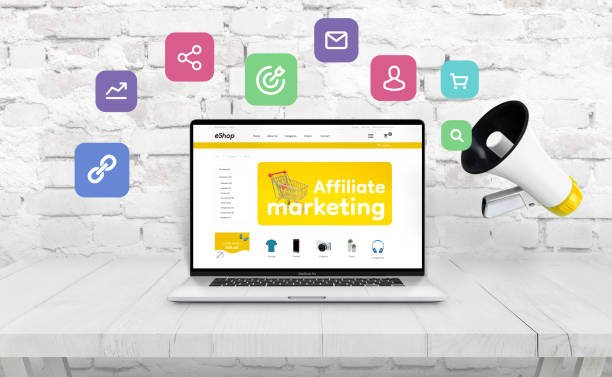Monetization Strategies for Pinterest Creators: Brand Partnerships and Affiliates
Pinterest is more than just a platform for inspiration—it’s a powerful tool for creators to grow their brand, reach a wider audience, and generate income. As a Pinterest creator, monetizing your content can become a key source of revenue. In this post, we’ll explore two primary monetization strategies: brand partnerships and affiliate marketing. By leveraging these strategies, you can start turning your Pinterest presence into a profitable venture.
Why Monetize on Pinterest?
Pinterest is an incredibly visual and user-friendly platform, making it perfect for showcasing products and services. Monetizing on Pinterest provides creators with opportunities to:
- Diversify Income Streams: Whether you’re a blogger, influencer, or entrepreneur, Pinterest can serve as a powerful tool for generating income through brand partnerships and affiliate marketing.
- Reach a Highly Engaged Audience: Pinterest’s audience is highly engaged with visual content, and users are often looking to purchase or take action on ideas they discover on the platform.
- Leverage Evergreen Content: Unlike other platforms where posts quickly fade, Pinterest content can have a long lifespan, continuously bringing in views, engagement, and monetization opportunities over time.
Monetization Strategy 1: Brand Partnerships

Brand partnerships are one of the most lucrative ways to monetize your Pinterest content. By working directly with brands, you can earn money by promoting products or services that align with your niche. Here’s how to make brand partnerships work for you on Pinterest:
Step 1: Build a Strong Pinterest Presence
Before you can attract brands, you need to build a strong and engaged audience on Pinterest. This means:
- Consistent Pinning: Regularly post high-quality, branded content that resonates with your target audience.
- Engagement: Focus on engagement, such as repinning, commenting, and interacting with your audience. This builds trust and establishes you as a credible creator.
- Profile Optimization: Ensure your Pinterest profile clearly reflects your niche, expertise, and audience. Use your bio and board descriptions to highlight what you do.
Step 2: Approach Brands or Join Affiliate Networks
- Direct Outreach: Once you have a solid following and quality content, you can reach out to brands directly. Craft a pitch that showcases your Pinterest reach, engagement metrics, and how their products align with your audience.
- Use Affiliate Networks: If direct outreach seems daunting, join affiliate networks such as Rakuten, ShareASale, or Skimlinks. These platforms help connect creators with brands that are actively seeking partnerships with Pinterest influencers.
Step 3: Create Authentic Content

When working with brands, it’s important to maintain authenticity. Your followers trust you, and they want to see products that align with your values and niche. Here’s how to create authentic content:
- Product Demonstrations: Create engaging pins that demonstrate how the product works or how it fits into your lifestyle.
- Incorporate Personal Stories: Share personal experiences with the product to make it more relatable to your audience.
- Follow Pinterest’s Guidelines: Be sure to follow Pinterest’s guidelines for sponsored content, including using the “#ad” hashtag to maintain transparency with your audience.
Step 4: Measure Your Performance
Once your brand partnerships go live, track their performance. Key metrics to focus on include:

- Pin Engagement: Track repins, comments, and shares to see how your content resonates with your audience.
- Affiliate Link Clicks: Use affiliate links to track conversions and sales directly from your Pinterest traffic.
- Revenue: Monitor the money earned from brand partnerships and adjust your strategy for future campaigns.
Monetization Strategy 2: Affiliate Marketing on Pinterest
Affiliate marketing is another popular way to monetize Pinterest content. With affiliate marketing, you earn a commission every time someone clicks on an affiliate link and makes a purchase. Let’s break down how to get started with affiliate marketing on Pinterest.
Step 1: Join Affiliate Programs
Start by joining affiliate programs that align with your niche. Some top affiliate programs for Pinterest creators include:
- Amazon Associates: One of the largest affiliate programs, where you can promote a wide range of products related to your niche.
- ShareASale: A popular affiliate network that offers access to thousands of brands in various niches.
- CJ Affiliate: Another top affiliate network that connects influencers with top brands and products.
- Impact Radius: A growing affiliate network that connects creators with brands in lifestyle, beauty, tech, and other industries.
Step 2: Select Affiliate Products That Fit Your Audience

Choose products that your Pinterest followers would genuinely be interested in. The best affiliate products are those that fit seamlessly into your content. Here’s how to choose:
- Relevant to Your Niche: If you run a DIY blog, consider promoting crafting supplies, tools, or tutorials. If you’re a fitness creator, focus on workout equipment or healthy products.
- High-Quality Products: Promote products you personally love or use. This helps maintain trust with your audience.
- Trackable: Make sure the affiliate program provides you with trackable links, so you can monitor clicks, conversions, and commissions.
Step 3: Create Compelling Pins With Affiliate Links
- Pin Design: Design eye-catching pins that feature the affiliate product. Highlight the benefits and features of the product in your pin description.
- Use Clear Call-to-Actions: Encourage your followers to click on your affiliate link with a clear call-to-action. For example: “Shop Now for 20% off” or “Discover the Best Workout Gear Here.”
- Add Affiliate Links: Insert affiliate links directly into your Pinterest pins or add them to your pin description (without overloading your description with too many links).
Step 4: Drive Traffic to Your Content
In order to make affiliate marketing work on Pinterest, you need traffic. Here’s how to increase your reach:
- Pinterest SEO: Optimize your pins with relevant keywords in the title, description, and image alt text to increase visibility.
- Tailwind: Use scheduling tools like Tailwind to post your pins consistently at optimal times, helping your content reach a wider audience.
- Join Group Boards: Participate in group boards in your niche to reach a larger community and drive more traffic to your affiliate links.
Step 5: Track Your Results and Optimize

Affiliate marketing success comes from testing and optimizing your strategy. Use Pinterest Analytics to track pin performance, click-through rates, and engagement. Then adjust your approach by:
- Testing Different Products: If one product is performing better than another, focus more on promoting similar products.
- Optimizing Pin Designs: Experiment with different designs, colors, and descriptions to find what resonates most with your audience.
- Track Conversions: Most affiliate programs offer dashboards where you can see how many people are clicking on your links and making purchases. Analyze these stats to see which products and pins are bringing in the most income.
Conclusion
Monetizing your Pinterest content through brand partnerships and affiliate marketing is a fantastic way to turn your passion into a sustainable income. Whether you work with brands directly or promote products through affiliate links, the key is to stay authentic, create valuable content, and track your results. By applying the strategies outlined in this post, you can start monetizing your Pinterest account and grow your business in 2025.
Ready to start earning on Pinterest? Begin by choosing the right affiliate programs or reaching out to brands that align with your niche. Don’t forget to track your success and keep optimizing your strategy. Happy pinning!







